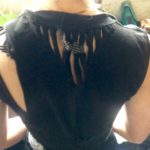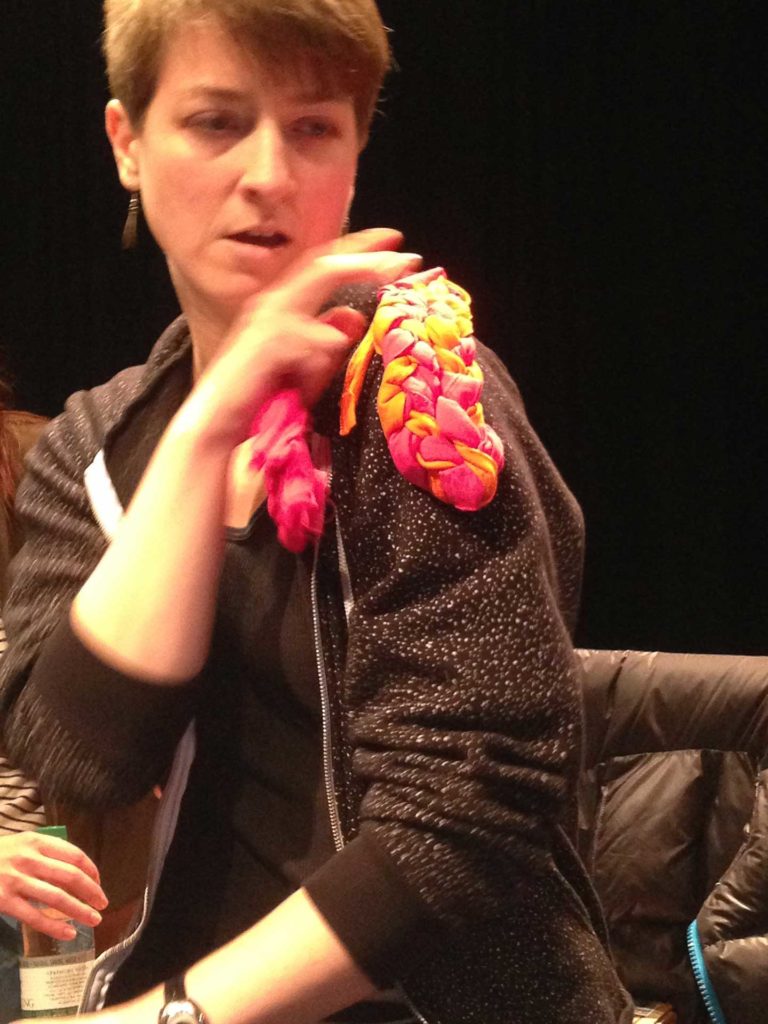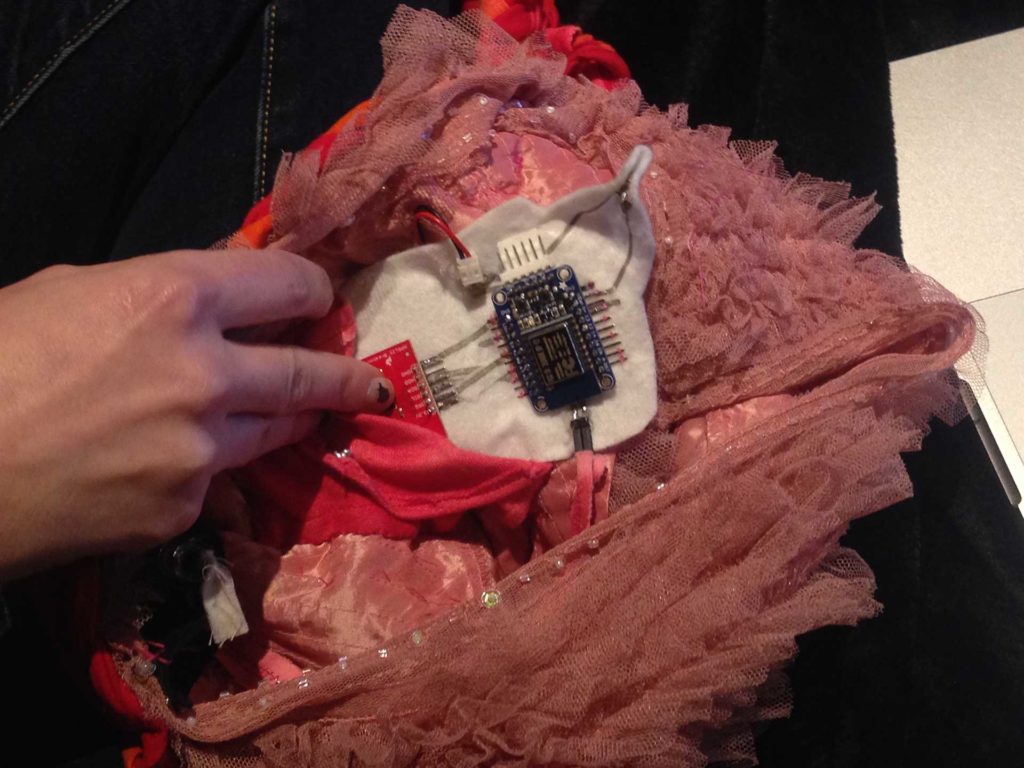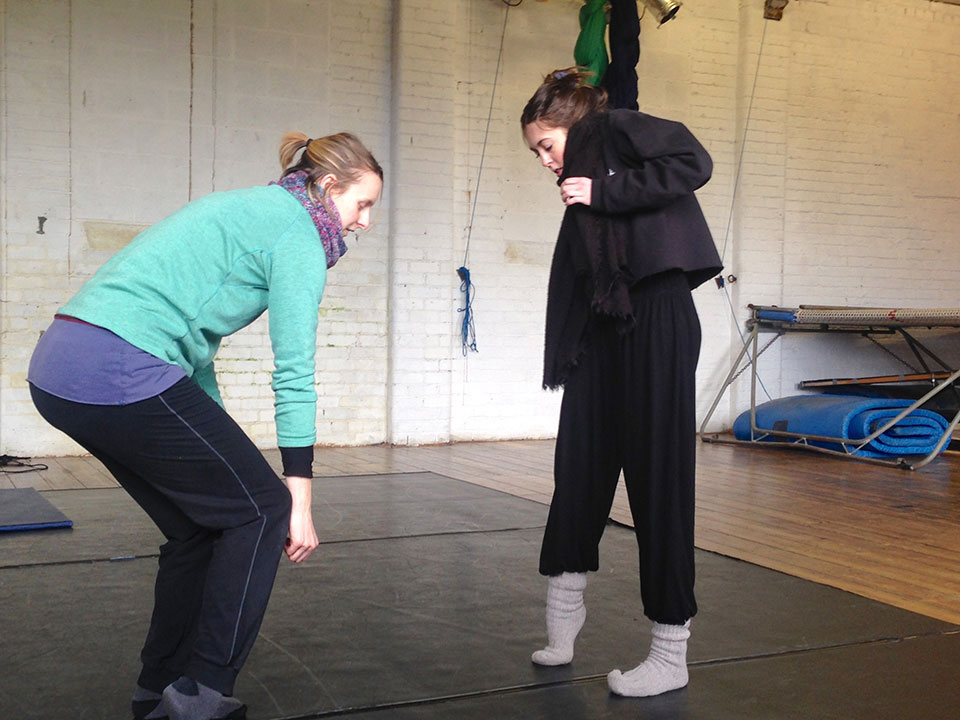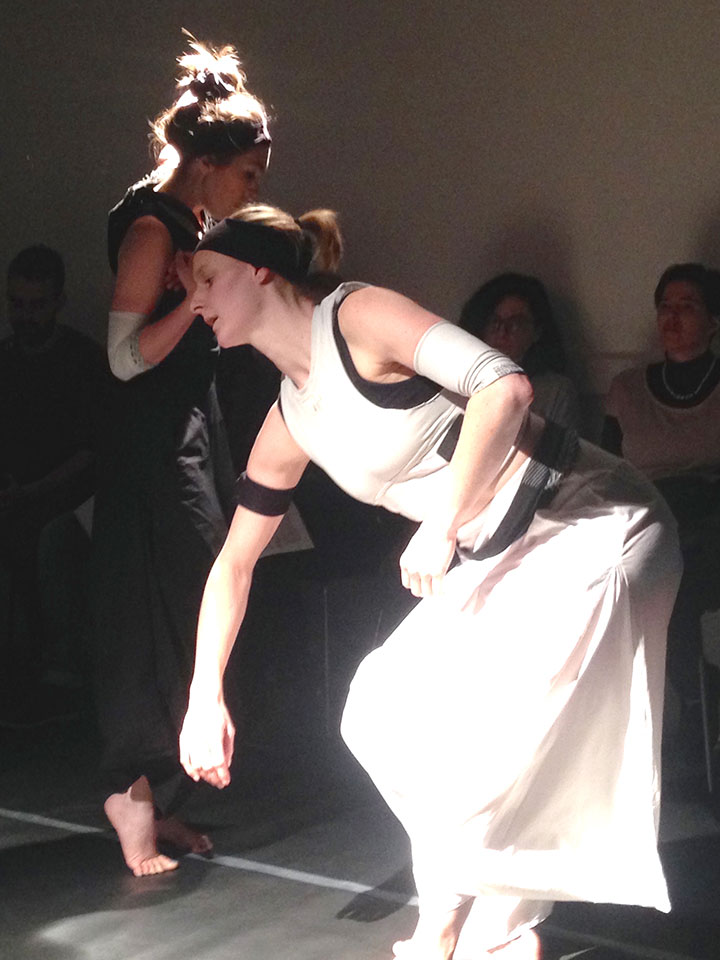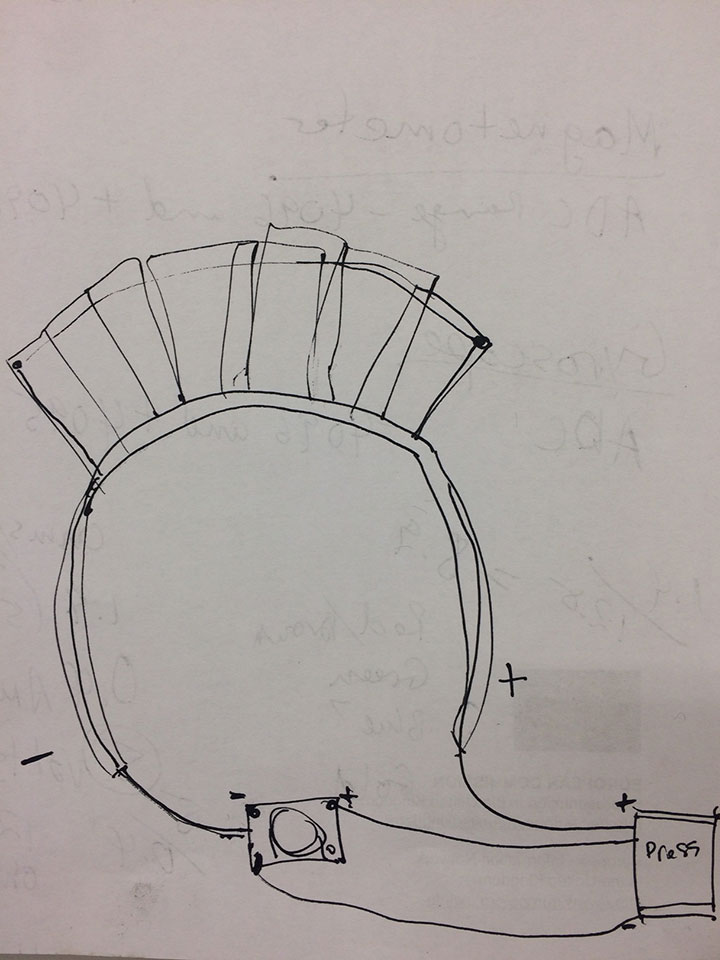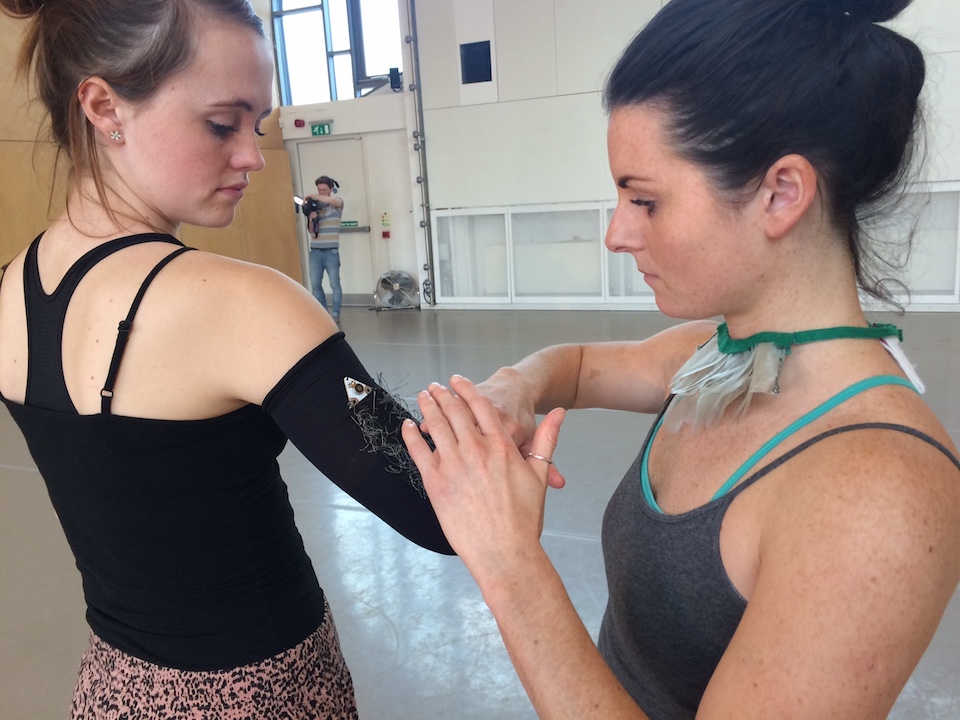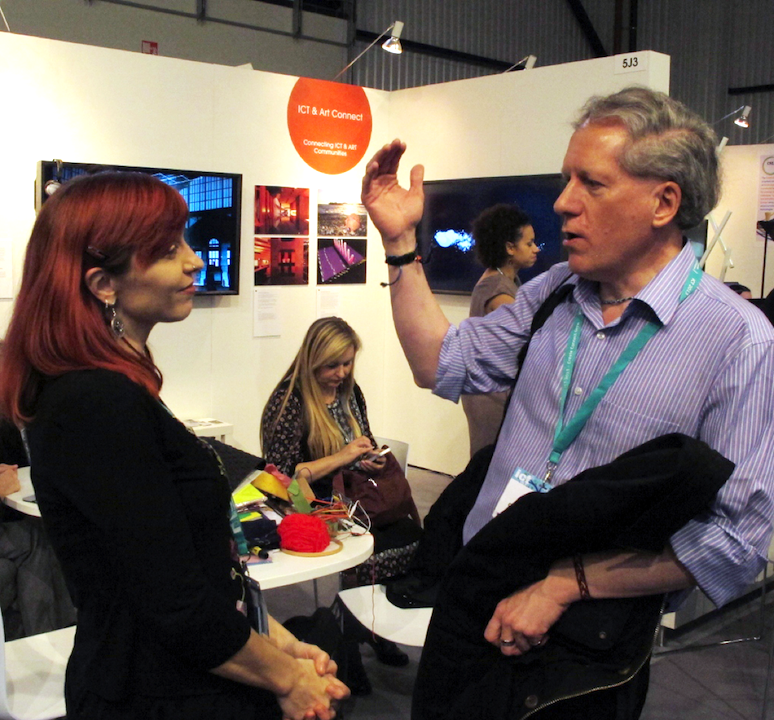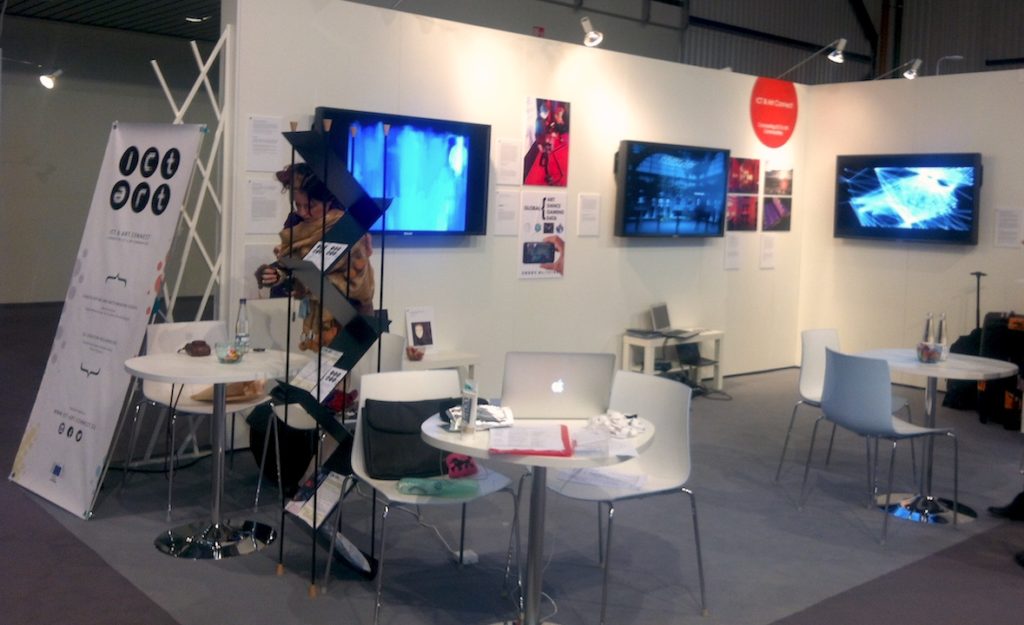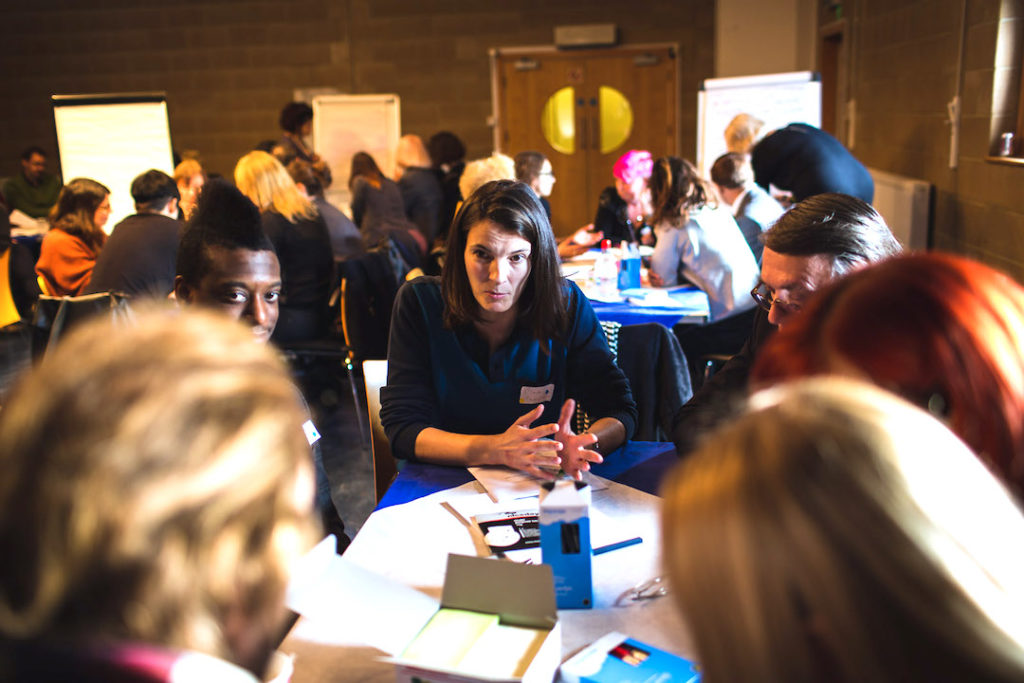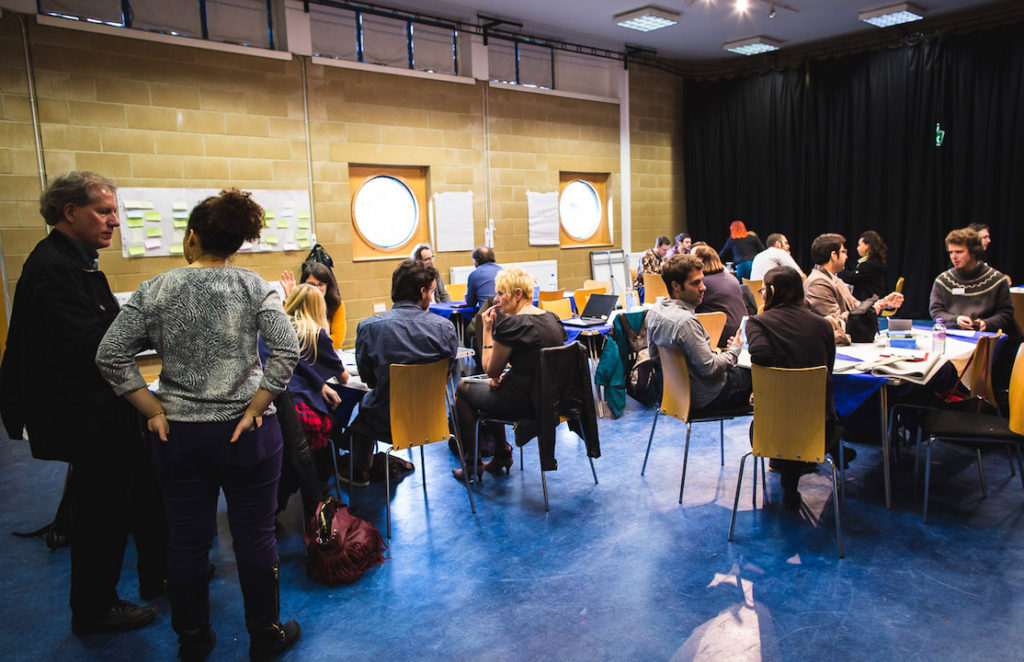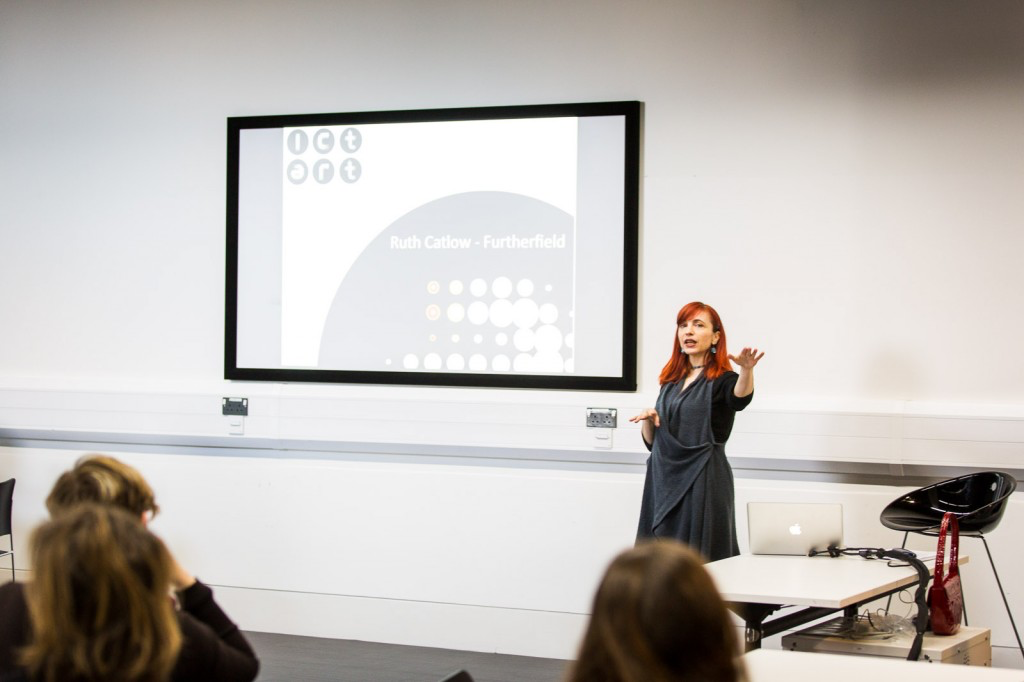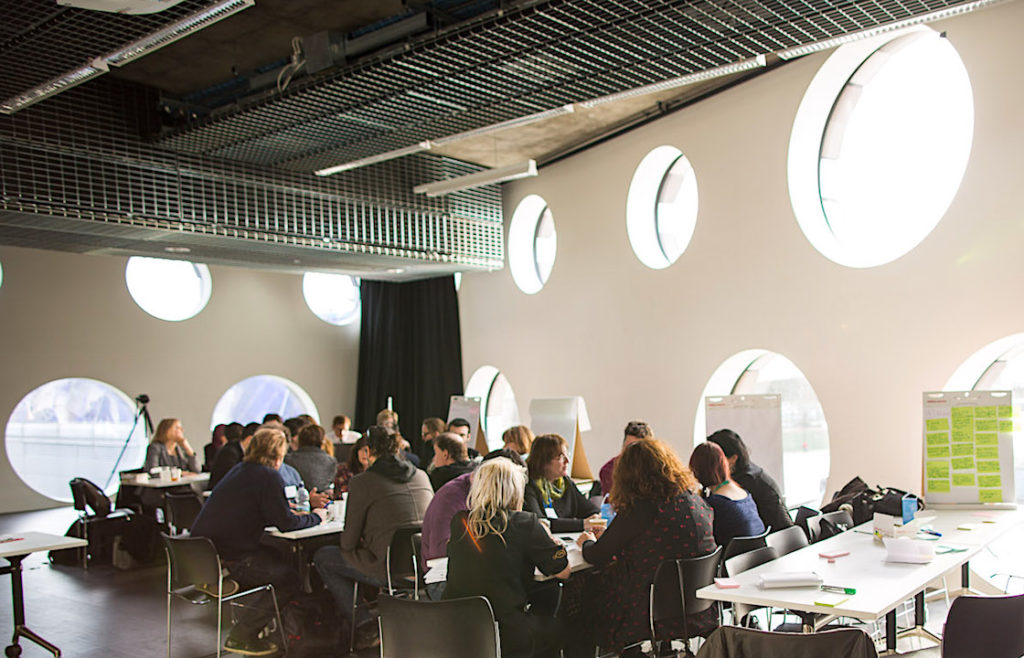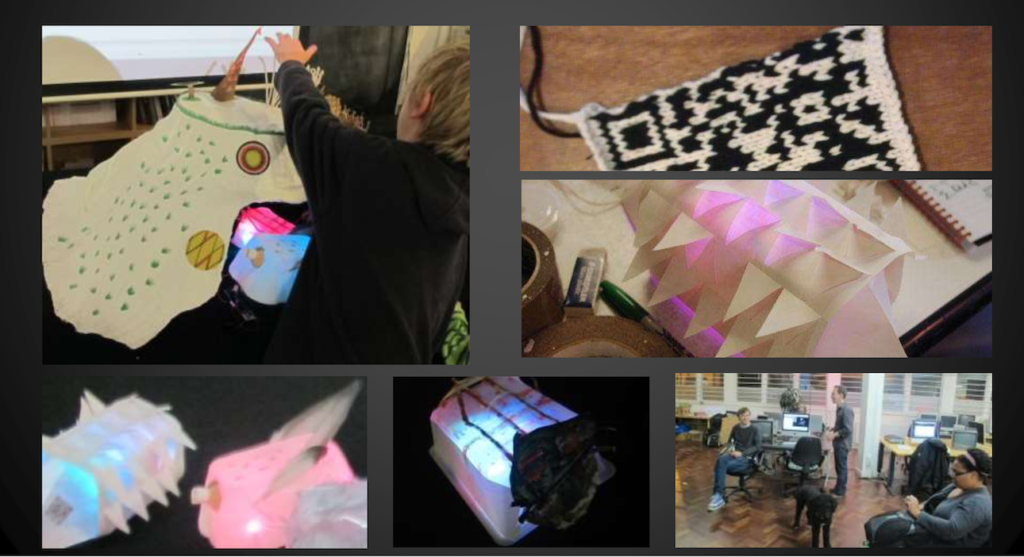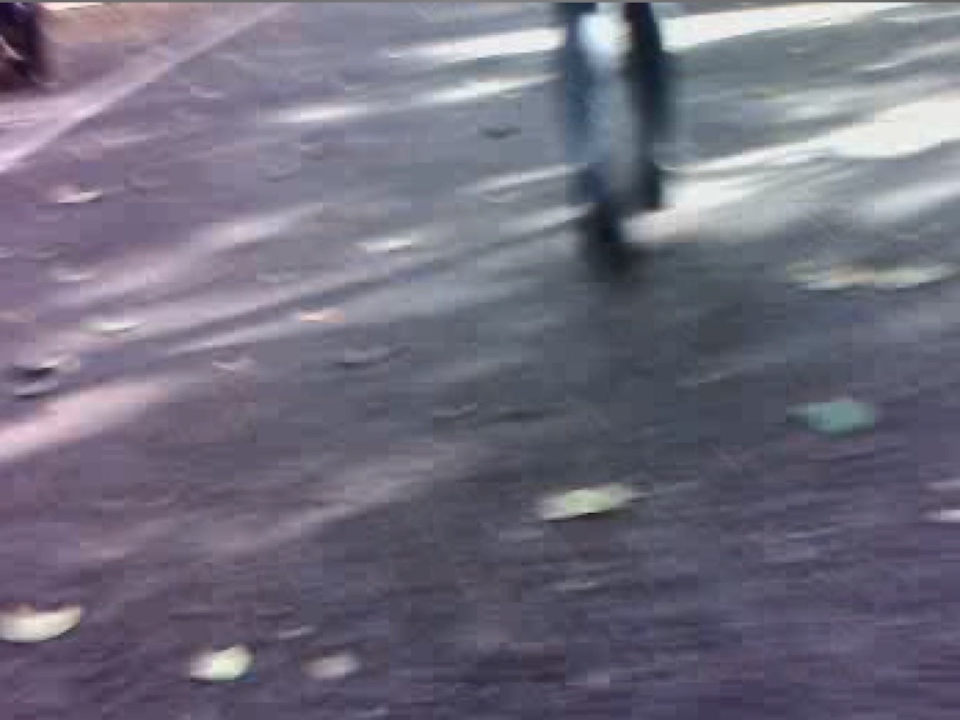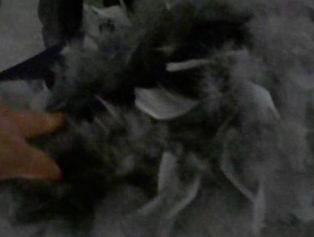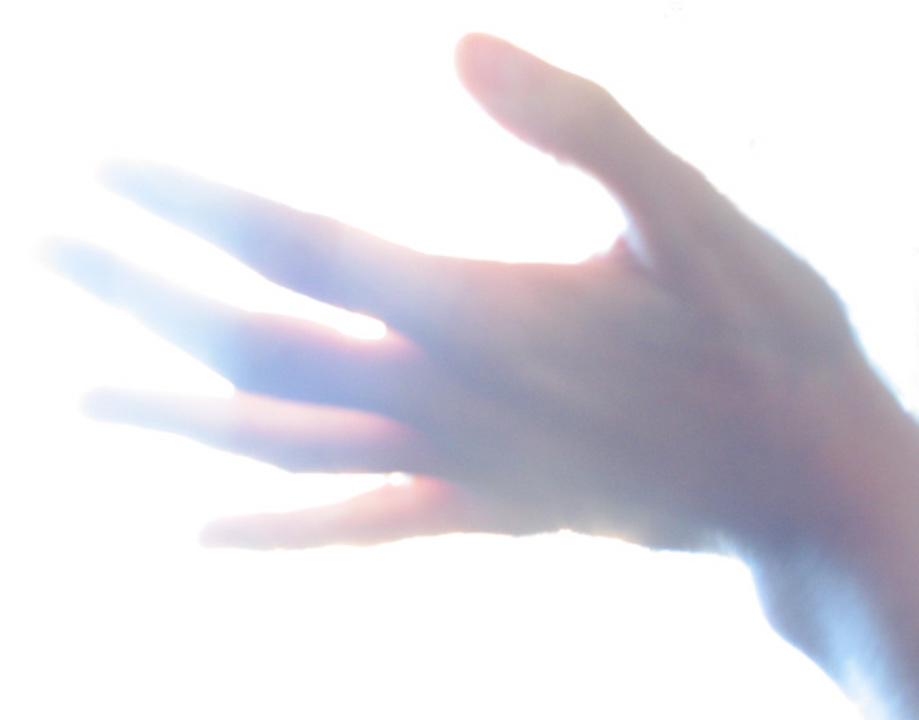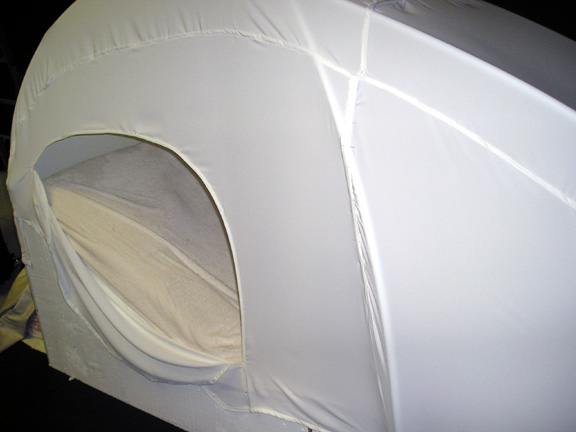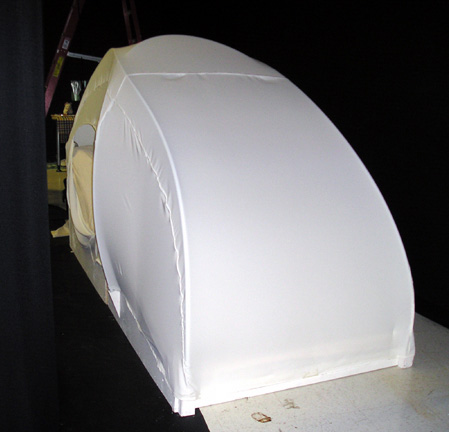> Stutter Flutter & Feel Me / e-textiles IoT Performances
Hacking The Body 2.0: Residency To Performance
Hacking The Body / HTB 2.0 is a collaboration between Dr Kate Sicchio and myself, which evolved since 2011 until 2018 and started by examining rhetoric within the online computing community around concepts of code, hacking, networks, the quantified self, and data, as a new approach to examining inner and outer states and sensations of the human body, using sensing devices within performance.
> Videos
> Timeline
April 2015 – February 2016
> Collaborators
- Dr Camille Baker / Dr Kate Sicchio – Artistic Direction, Concept, Interaction Design
- Dr Kate Sicchio – Choreography
- Dr Rebecca Stewart – Electronics Design, Development, Garment Integration
- Ms Tara Baoth-Mooney – Garment Design, Electronics Integration; Voice & Music
- Rick Loynes – Sound Design
- Dr Camille Baker – Sound Editing
- Tara Baker / Phoebe Brown – Dance Performance
- Peter Todd – iPad Mobile App Design
> Abstract
Exploring the concept of hacking data to re-purpose and re-imagine biofeedback from the body. It used states of the body and hacked that data to make new artworks, such as performance and costumes. Through performance the aim was to communicate to the public new ways dancers engage with their bodies and technology, through intimacy and sensation embedded in wearables. It was as much performance investigation into body as creative material as a conceptual research endeavour data as identity and ethics of data ownership.
From April 2015 to June 2016, this instantiation the collaboration started as a residency at UCA in April 2015, with rehearsals and testing In November 2015, culminating in three performance stagings in Sheffield and London between February 16-18, 2016 and a further performance staging in June 2016 in Brighton. The instantiations of the project helped to develop our hands-on skills in making and using DIY electronics, soft-circuits and smart textiles, as well as to unearth greater unethical data collection activities.
Flutter Stutter was an improvisational dance piece that used soft circuit sensors to trigger sound and haptic actuators in the form of a small motor that tickles the performers. Dancers embodied the flutter of the motor and respond with their own movement that reflected this feeling. The sensors and actuators were bespoke designs by Becky Stewart and Tara Baoth Mooney that interacted, influenced and interrupted the flow of the dance, hack the body signals.
Feel Me worked with hacked commercial biosensing technology and structured improvisation dance. This piece used breath sensing technology from reworked fitness wearable tech garments and a custom-made app (made by artist Peter Todd, with permission of the fitness company OM Signal), that accessed the company’s development tools, and was used to communicate from the garment’s sensor to its actuator (a vibration motor), which buzzed when the dancers exhaled, causing them to respond within in a structured improvisation.
All the technology was developed over a several months, then integrated into the final garments and performances during an intensive three-week period running up to the performances in February.
> Partners
- Arts Council England
- UCA / University for the Creative Arts
- New Malden Studios
> Budget / Funding
- £13,977 / Arts Council England, Feb – Oct 2016 (Creation & Performance Staging)
- £6,750 / UCA, Apr 2015 (Artist Residency), Oct 2016 (Technical Development)
> Outcomes / Impact
October 5, 2018–February 8, 2019 Attempts, Failures, Trials and Errors exhibition of our video documentation of the live performances of Flutter /Stutter and Feel Me, curated by Hillevi Munthe and Tincuta Heinzel called OSEBNO / PERSONAL: international interdisciplinary exhibition at KIBLA PORTAL, Maribor, Slovenia. Webpage http://personal.kiblaportal.org/en_US/2018/10/01/kate-sicchio-zda-camille-baker-kanada-zk/ and other artists in the exhibition http://personal.kiblaportal.org/en_US/. Also featured on Slovenian TV and in an article by the curators Tincuta Heinzel and Ioana Popescu for Zeppelin Journal in Bucharest at https://e-zeppelin.ro/zeppelin-151/ More details here: http://www.kibla.org/en/news/news/?no_cache=1&tx_ttnews[tt_news]=5417&tx_ttnews[backPid]=1&cHash=aa50326f33 To see pictures from the opening https://www.flickr.com/photos/heinzelmenschen/albums/72157702077721485
Feb 21- April 1, 2018 Attempts, Failures, Trials and Errors exhibition with video of the live performances of Flutter /Stutter and Feel Me, curated by Hillevi Munthe and Tincuta Heinzel in Bucharest at the “Salon de Proiecte”. Online at http://salonuldeproiecte.ro/exhibitions/attempts-failures-trials-and-errors/ and Facebook page: https://www.facebook.com/events/1786684551415496/ images at https://www.flickr.com/photos/heinzelmenschen/sets/72157666073147048
Nov 16-Dec 9, 2017 Attempts, Failures, Trials and Errors exhibition of video for live performances of Flutter /Stutter and Feel Me, curated by Hillevi Munthe and Tincuta Heinzel, at Piksel art gallery, Bergen, Norway. Online at http://17.piksel.no/?p=432 and http://trials-and-errors.com/projects The exhibition “looks at the various stages of projects’ developments and attempts and perspectives and less mediatised wearable technologies and e-textiles projects.”
March 5th, 2017 Refest2.0 ITP NYU, New York City, a telematic performance via the Internet of Things protocol of X-OSc of Feel Me dance and wearables piece, created for February 2016 performances below, between one dancer in New York City and one in London, UK – documented briefly on our blog https://hackingthebody.wordpress.com/2017/05/01/performance-at-refest2-0-at-nyu-itp/
June 30-July 2, 2016 International Conference on Live Interfac es, Brighton, UK, performance of our Flutter /Stutter dance and wearables piece, created for February 2016 performances below www.liveinterfaces.org/ – conference proceedings https://thormagnusson.github.io/liveinterfaces/proceedings2016.html and video of live performance https://youtu.be/wDD1tQEJNJk
July–November 2015 Hacking the Body at 2015 Wear_NEXT Exhibition, Brisbane, Gallery artisan & touring Australia and Asia https://www.weekendnotes.com/wear-next-exhibition-gallery-artisan/ and online catalogue https://issuu.com/beckdavisgriffithuniversity/docs/wearnext_catalogue. A radio review of the show: http://mpegmedia.abc.net.au/rn/podcast/2015/09/bst_20150903_0843.mp3 and a video made during R&D residency at UCA and Siobhan Davies https://hackingthebody.wordpress.com/ or https://vimeo.com/133353621 featured in the exhibition
> Further Information
- Website: Hacking The Body
- Publication: “Hacking the Body 2.0: Dancing Between Commercial and DIY Wearable Technology“, (March 2018) with Dr Sicchio, Conference proceedings.
- Publication: “Critical Interventions in Wearable Tech, Smart Fashion & Etextiles in Art and Performance”, with Dr Sicchio (Sept 26, 2017) Book chapter.
- Publication: “Hacking the Body 2.0: Flutter Stutter” International Conference on Live Interfaces, Brighton, with Dr Sicchio, Dr Stewart, and Ms Mooney, (June 30-July 2, 2016), Conference Proceeding and Journal article.


